Instruction
Stopping the slice: Fix the path or the face?
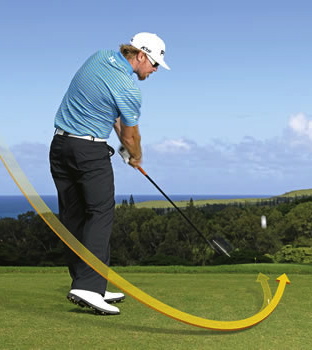
I was reading a debate between two teachers, both of whom use golf radar (Trackman and FlightScope), and they were discussing the “best” way to fix the average golfer’s slice. One was adamant about fixing club path first, while the other focused on fixing the clubface first.
Obviously, both instructors were working toward the same goal, but they were attacking it from two different directions. Personally, I don’t get involved too often within these debates, but this one made me think and I wanted to add my two cents.
During the “video era” of golf instruction (the one in which I learned how to teach golf), instructors became WAY too focused on “position golf.” Most of the time, the “good” positions did help the average player, but sometimes instructors caused their players to lose the individuality of their swings in the process. That caused issues within many golfers’ fundamentals — they were trying to do something that they could not do only because it looked good on on video. From there, the argument was made that instructors made players look stiff and robotic. Worst of all, the teaching style made many golfers way too position conscious, because their instructors didn’t realize that there was more than one way to move the body and club successfully.
Now, rewind to my Twitter debate of one teacher only focusing on the club path, and one focusing on the clubface. Is it not similar to the “video era” discussion above?
The Path-First Teacher
Let’s take this sample slicer from my Trackman and ask ourselves a few questions if you’re a path-first only teacher:
- What if the sample player had a path that was never going to be cured due to 50 years of an over-the-top move?
- Could this player’s path be fixed if he only practiced once a week during his 30-minute lunch?
- Does this player have the motivation to cure this over-the-top path, and is he willing to endure a few rounds of bad shots in order to cure this for good?
- Does fixing his path correlate with the goals HE expressed to you at the beginning of the lesson?
- Is this the path of least resistance for him to follow in order to reach these goals?
The Face-First Teacher
Let’s take this sample slicer from my Trackman and ask ourselves a few questions if you’re a face-first only teacher:
- If this player tends to swing from the inside this much and tends to hit down on the ball, is fixing the face really going to give him the ball control he needs?
- Will changing the face angle at impact help this player to stop hitting too much down on it with the driver?
- If the face begins to move too far left of the path then he will begin to hit bigger hooks. Will this cause him to swing more to the right and hook it even farther left?
- Will fixing the face angle help this player to reach the goals that he established at the start of the instruction?
- Is this the path of least resistance for this player based on his stated goals?
So what’s the correct way to fix these players? IT’S BOTH!
Sometimes, I decide that it’s best to fix the path first, while other times I fix the face first. It all depends on the goals that the student and I determine from our interview process!
If someone wants to break 125 for the first time, why would I even take him to the lesson tee? Instead, we hit the short game area. But a player wants to play in college, then that’s an entirely different lesson.
What about the weekend slicer who has always come majorly over the top and has never seen the ball move left? All he wants to do is hit it left, so why wouldn’t you change his face angle? What about the handsy player who swings too much from the inside — why wouldn’t you fix his swing direction?
It’s amazing how some teachers focus only on “their way” as the only way. They push everyone into the mold that they determine to be best without listening to the person actually taking the lesson in the first place! Isn’t it up to the student as to what they want us to do for them on the lesson tee? After that, it’s a yin and yang between the teacher and student. Remember not everyone can move like a tour player!
As good golf instructors have known all along, there is more than one way to fix a golf swing. Teaching golf is not all about what the numbers on my Trackman say — it’s about what the student wants me to do. Fixing a slice is not all about fixing the face or path first; it’s about fixing the slice in the easiest way possible so the player can return to the course the next time in a better frame of mind and play better than ever before.
That is teaching my friend.
Instruction
The Wedge Guy: Beating the yips into submission

There may be no more painful affliction in golf than the “yips” – those uncontrollable and maddening little nervous twitches that prevent you from making a decent stroke on short putts. If you’ve never had them, consider yourself very fortunate (or possibly just very young). But I can assure you that when your most treacherous and feared golf shot is not the 195 yard approach over water with a quartering headwind…not the extra tight fairway with water left and sand right…not the soft bunker shot to a downhill pin with water on the other side…No, when your most feared shot is the remaining 2- 4-foot putt after hitting a great approach, recovery or lag putt, it makes the game almost painful.
And I’ve been fighting the yips (again) for a while now. It’s a recurring nightmare that has haunted me most of my adult life. I even had the yips when I was in my 20s, but I’ve beat them into submission off and on most of my adult life. But just recently, that nasty virus came to life once again. My lag putting has been very good, but when I get over one of those “you should make this” length putts, the entire nervous system seems to go haywire. I make great practice strokes, and then the most pitiful short-stroke or jab at the ball you can imagine. Sheesh.
But I’m a traditionalist, and do not look toward the long putter, belly putter, cross-hand, claw or other variation as the solution. My approach is to beat those damn yips into submission some other way. Here’s what I’m doing that is working pretty well, and I offer it to all of you who might have a similar affliction on the greens.
When you are over a short putt, forget the practice strokes…you want your natural eye-hand coordination to be unhindered by mechanics. Address your putt and take a good look at the hole, and back to the putter to ensure good alignment. Lighten your right hand grip on the putter and make sure that only the fingertips are in contact with the grip, to prevent you from getting to tight.
Then, take a long, long look at the hole to fill your entire mind and senses with the target. When you bring your head/eyes back to the ball, try to make a smooth, immediate move right into your backstroke — not even a second pause — and then let your hands and putter track right back together right back to where you were looking — the HOLE! Seeing the putter make contact with the ball, preferably even the forward edge of the ball – the side near the hole.
For me, this is working, but I am asking all of you to chime in with your own “home remedies” for the most aggravating and senseless of all golf maladies. It never hurts to have more to fall back on!
Instruction
Looking for a good golf instructor? Use this checklist
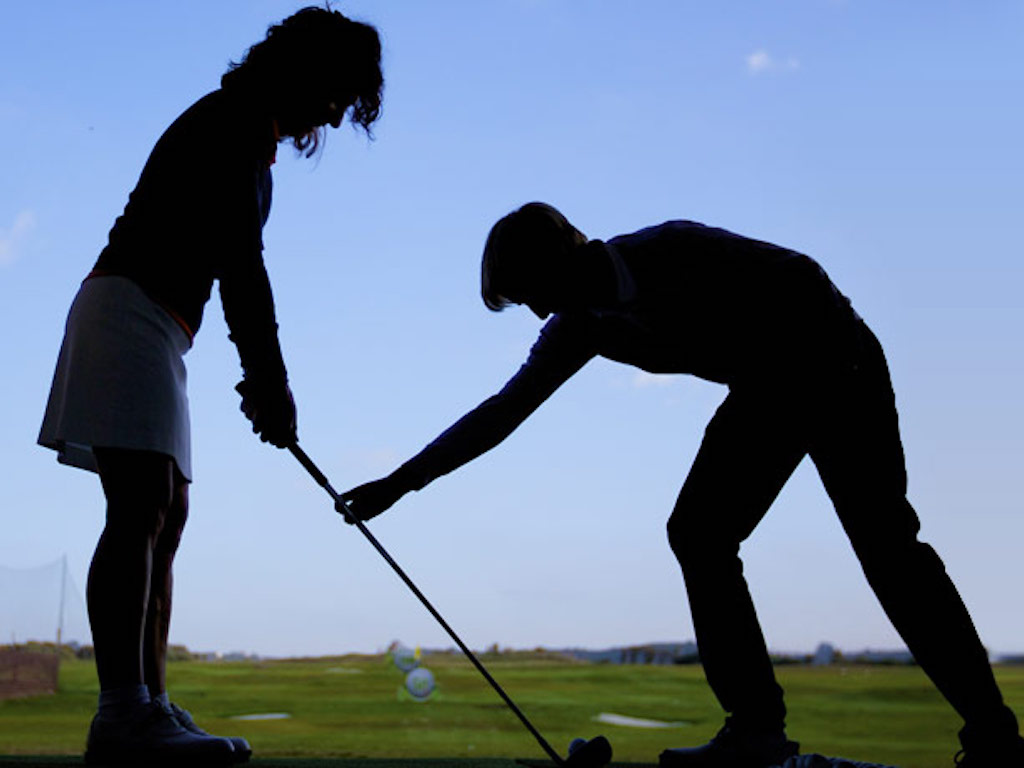
Over the last couple of decades, golf has become much more science-based. We measure swing speed, smash factor, angle of attack, strokes gained, and many other metrics that can really help golfers improve. But I often wonder if the advancement of golf’s “hard” sciences comes at the expense of the “soft” sciences.
Take, for example, golf instruction. Good golf instruction requires understanding swing mechanics and ball flight. But let’s take that as a given for PGA instructors. The other factors that make an instructor effective can be evaluated by social science, rather than launch monitors.
If you are a recreational golfer looking for a golf instructor, here are my top three points to consider.
1. Cultural mindset
What is “cultural mindset? To social scientists, it means whether a culture of genius or a culture of learning exists. In a golf instruction context, that may mean whether the teacher communicates a message that golf ability is something innate (you either have it or you don’t), or whether golf ability is something that can be learned. You want the latter!
It may sound obvious to suggest that you find a golf instructor who thinks you can improve, but my research suggests that it isn’t a given. In a large sample study of golf instructors, I found that when it came to recreational golfers, there was a wide range of belief systems. Some instructors strongly believed recreational golfers could improve through lessons. while others strongly believed they could not. And those beliefs manifested in the instructor’s feedback given to a student and the culture created for players.
2. Coping and self-modeling can beat role-modeling
Swing analysis technology is often preloaded with swings of PGA and LPGA Tour players. The swings of elite players are intended to be used for comparative purposes with golfers taking lessons. What social science tells us is that for novice and non-expert golfers, comparing swings to tour professionals can have the opposite effect of that intended. If you fit into the novice or non-expert category of golfer, you will learn more and be more motivated to change if you see yourself making a ‘better’ swing (self-modeling) or seeing your swing compared to a similar other (a coping model). Stay away from instructors who want to compare your swing with that of a tour player.
3. Learning theory basics
It is not a sexy selling point, but learning is a process, and that process is incremental – particularly for recreational adult players. Social science helps us understand this element of golf instruction. A good instructor will take learning slowly. He or she will give you just about enough information that challenges you, but is still manageable. The artful instructor will take time to decide what that one or two learning points are before jumping in to make full-scale swing changes. If the instructor moves too fast, you will probably leave the lesson with an arm’s length of swing thoughts and not really know which to focus on.
As an instructor, I develop a priority list of changes I want to make in a player’s technique. We then patiently and gradually work through that list. Beware of instructors who give you more than you can chew.
So if you are in the market for golf instruction, I encourage you to look beyond the X’s and O’s to find the right match!
Instruction
What Lottie Woad’s stunning debut win teaches every golfer
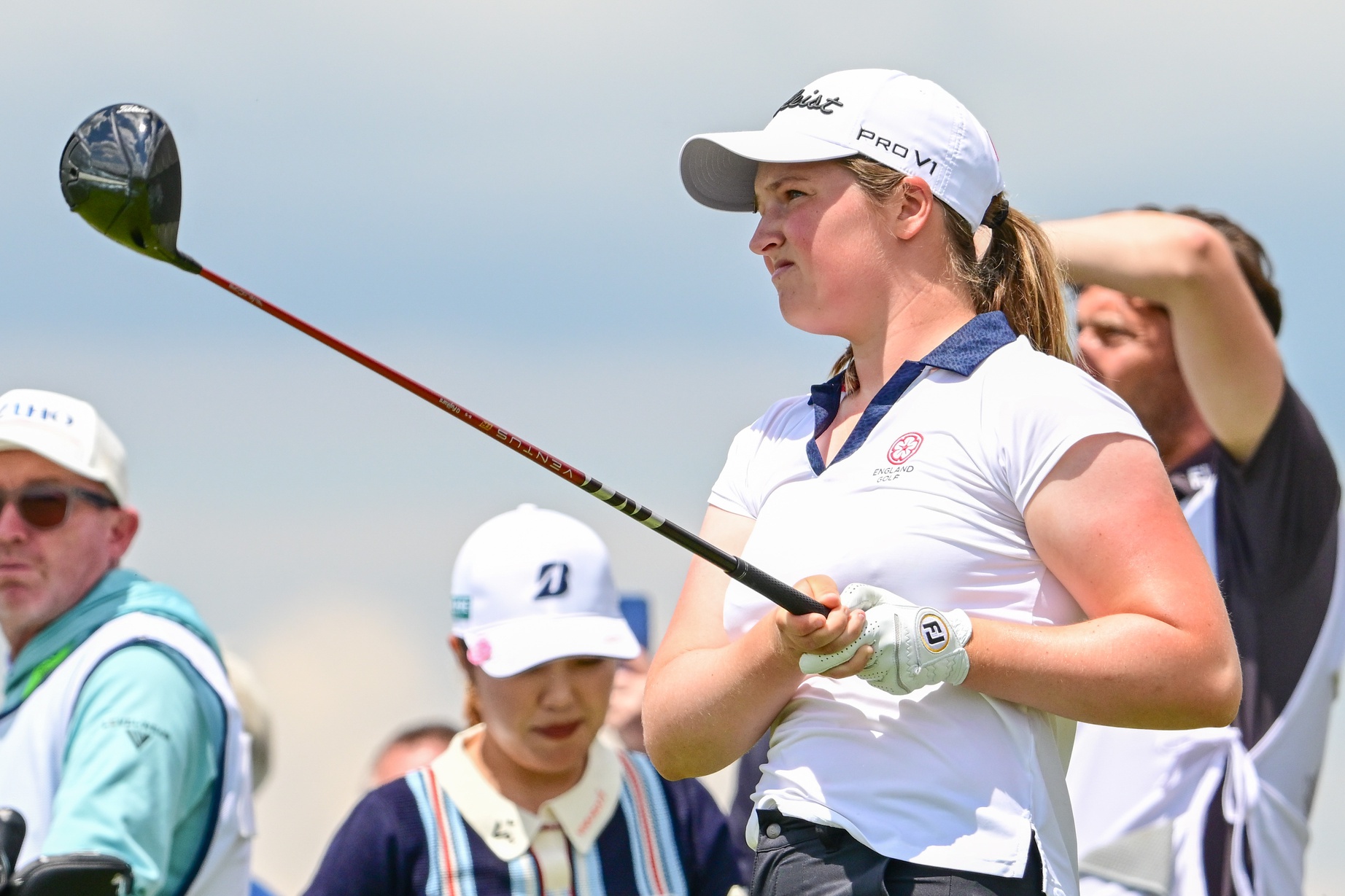
Most pros take months, even years, to win their first tournament. Lottie Woad needed exactly four days.
The 21-year-old from Surrey shot 21-under 267 at Dundonald Links to win the ISPS Handa Women’s Scottish Open by three shots — in her very first event as a professional. She’s only the third player in LPGA history to accomplish this feat, joining Rose Zhang (2023) and Beverly Hanson (1951).
But here’s what caught my attention as a coach: Woad didn’t win through miraculous putting or bombing 300-yard drives. She won through relentless precision and unshakeable composure. After watching her performance unfold, I’m convinced every golfer — from weekend warriors to scratch players — can steal pages from her playbook.
Precision Beats Power (And It’s Not Even Close)
Forget the driving contests. Woad proved that finding greens matters more than finding distance.
What Woad did:
• Hit it straight, hit it solid, give yourself chances
• Aimed for the fat parts of greens instead of chasing pins
• Let her putting do the talking after hitting safe targets
• As she said, “Everyone was chasing me today, and managed to maintain the lead and played really nicely down the stretch and hit a lot of good shots”
Why most golfers mess this up:
• They see a pin tucked behind a bunker and grab one more club to “go right at it”
• Distance becomes more important than accuracy
• They try to be heroic instead of smart
ACTION ITEM: For your next 10 rounds, aim for the center of every green regardless of pin position. Track your greens in regulation and watch your scores drop before your swing changes.
The Putter That Stayed Cool Under Fire
Woad started the final round two shots clear and immediately applied pressure with birdies at the 2nd and 3rd holes. When South Korea’s Hyo Joo Kim mounted a charge and reached 20-under with a birdie at the 14th, Woad didn’t panic.
How she responded to pressure:
• Fired back with consecutive birdies at the 13th and 14th
• Watched Kim stumble with back-to-back bogeys
• Capped it with her fifth birdie of the day at the par-5 18th
• Stayed patient when others pressed, pressed when others cracked
What amateurs do wrong:
• Get conservative when they should be aggressive
• Try to force magic when steady play would win
• Panic when someone else makes a move
ACTION ITEM: Practice your 3-6 foot putts for 15 minutes after every range session. Woad’s putting wasn’t spectacular—it was reliable. Make the putts you should make.
Course Management 101: Play Your Game, Not the Course’s Game
Woad admitted she couldn’t see many scoreboards during the final round, but it didn’t matter. She stuck to her game plan regardless of what others were doing.
Her mental approach:
• Focused on her process, not the competition
• Drew on past pressure situations (Augusta National Women’s Amateur win)
• As she said, “That was the biggest tournament I played in at the time and was kind of my big win. So definitely felt the pressure of it more there, and I felt like all those experiences helped me with this”
Her physical execution:
• 270-yard drives (nothing flashy)
• Methodical iron play
• Steady putting
• Everything effective, nothing spectacular
ACTION ITEM: Create a yardage book for your home course. Know your distances to every pin, every hazard, every landing area. Stick to your plan no matter what your playing partners are doing.
Mental Toughness Isn’t Born, It’s Built
The most impressive part of Woad’s win? She genuinely didn’t expect it: “I definitely wasn’t expecting to win my first event as a pro, but I knew I was playing well, and I was hoping to contend.”
Her winning mindset:
• Didn’t put winning pressure on herself
• Focused on playing well and contending
• Made winning a byproduct of a good process
• Built confidence through recent experiences:
- Won the Women’s Irish Open as an amateur
- Missed a playoff by one shot at the Evian Championship
- Each experience prepared her for the next
What this means for you:
• Stop trying to shoot career rounds every time you tee up
• Focus on executing your pre-shot routine
• Commit to every shot
• Stay present in the moment
ACTION ITEM: Before each round, set process goals instead of score goals. Example: “I will take three practice swings before every shot” or “I will pick a specific target for every shot.” Let your score be the result, not the focus.
The Real Lesson
Woad collected $300,000 for her first professional victory, but the real prize was proving that fundamentals still work at golf’s highest level. She didn’t reinvent the game — she simply executed the basics better than everyone else that week.
The fundamentals that won:
• Hit more fairways
• Find more greens
• Make the putts you should make
• Stay patient under pressure
That’s something every golfer can do, regardless of handicap. Lottie Woad just showed us it’s still the winning formula.
FINAL ACTION ITEM: Pick one of the four action items above and commit to it for the next month. Master one fundamental before moving to the next. That’s how champions are built.
PGA Professional Brendon Elliott is an award-winning coach and golf writer. You can check out his writing work and learn more about him by visiting BEAGOLFER.golf and OneMoreRollGolf.com. Also, check out “The Starter” on RG.org each Monday.
Editor’s note: Brendon shares his nearly 30 years of experience in the game with GolfWRX readers through his ongoing tip series. He looks forward to providing valuable insights and advice to help golfers improve their game. Stay tuned for more Tips!





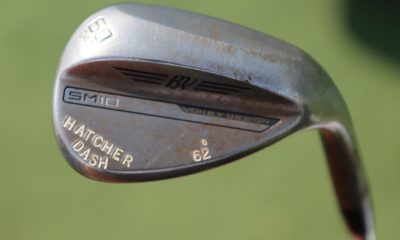

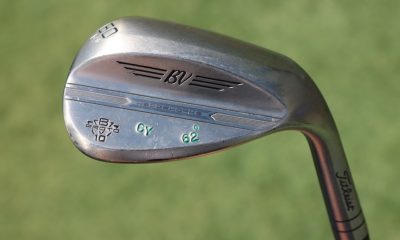

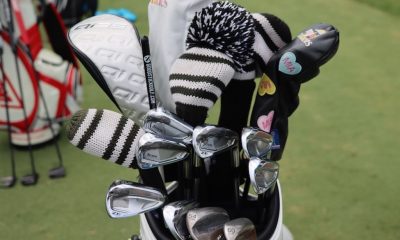

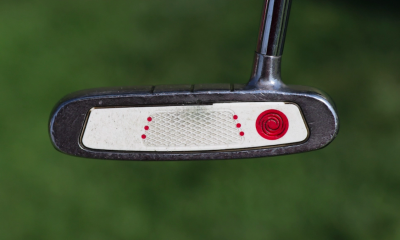

Pingback: How to Correct a Slice in Golf – Golfer Kingdom
Adam Young
Sep 11, 2013 at 12:47 pm
Great article. There are some important considerations in here for all teachers to take note of. I myself teach with the same philosophy.
There’s more than one way to skin a cat – and as golfers there are many ways to achieve impact physics which are ‘good enough’ to play great golf.
Andrew Cooper
Aug 30, 2013 at 11:58 am
Can’t always be one way or the other. Find the root problem and then get to work on that first. If a golfer has a weak grip and/or rolls the club into an open position during their swing then, if they ever want to hit their target, they’ll have to swing left to compensate for the open face angle. Conversely, if they’ve a fairly neutral grip and club face angle through the swing but have, for instance, open shoulder alignment at address or an over the top move from top of the backswing, then they’ll have to block and hold the face open to compensate for the out to in path-if they squared and released the club face at impact they’d miss their target left every time.
Get the club face square to closed and they’ll lose the need to swing left; get the swing path on line to inside and they’ll lose the need to block and hold the face open.
yo!
Aug 29, 2013 at 6:58 pm
If you don’t fix both, you will never have good, pure contact. But if you want to have a quick but imperfect fix, then fix one and you may avoid the woods on the right side (for a right hander) more often.
yo!
Aug 29, 2013 at 7:01 pm
Actually, if I had to fix one first, I would fix the path first. You would retain power and distance and be able to hit those power fades. Of course, that is based on the assumption that the club face is not overly open.
Dave Tutelman
Aug 28, 2013 at 2:39 pm
The solution depends on the problem. Most slicers I’ve seen have a path problem. If the ball starts at the target and then slices, the face is pretty good already. It’s a face problem only if the ball starts out to the right. (Assuming a right-handed golfer, of course.)
So the question isn’t which do you fix first. It’s which is the actual problem THAT golfer is having — the one that NEEDS fixing. Usually you don’t have to fix both.
Most instructors have a problem with this analysis. But the PGA teaching manual had incorrect “ball flight rules” until less than 20 years ago. Teaching the teachers still hasn’t completely caught up with what we now know about ball flight.
stephenf
Aug 28, 2013 at 12:38 pm
There are _so_ few players below pro or top-level amateur who actually come at the ball from the inside, though. Truth is, if you have that steep-and-outside path, and you add a strong release to it (closing the face through impact), you can’t do anything but hit left-to-left, which will make you aim farther and farther to the right. When I was teaching, I was pretty adamant about going after path first, if you wanted to become any kind of player at all.
However, it’s also true that release and path affect each other. The steeper and more outside you are, the harder it is to release the club well, in nearly 100% of the cases I’ve seen. That’s because of both the physiology of it and the mental cue that tells you you _can’t_ release it or you’ll hit it off the world to the left. So it just gets worse and worse. But, in one of those typical golf paradoxes, you also can improve your path by improving your release, because your body doesn’t sense the need to pull everything left because of a bad release anymore. I had my best success — both with students and in my own competitive play — by working on drills to improve both. Still, I think if I had to start with one or the other, for at least 80-90% of players it would be path, because that tends to unlock the release, or give you at least the _potential_ for a good release.
stephenf
Aug 28, 2013 at 12:42 pm
Incidentally, what the author says about “position” teachers is so, SO true. Go to any high-traffic range these days, especially on a day when high-school or even college players are there, and you’ll see a ton of swings that fit the mold, look pretty, etc., but too many of them result in shots that are relatively lifeless and/or not particularly related to the target, even among fairly advanced (and typically overtaught) players.
Peter
Aug 27, 2013 at 1:22 am
If you fix the face only, having an out-to-in path, the flight path will get straighter, but it is still a fade, even, when it goes straight.
Also my 2-cents is that straight fade is better for most weekenders, since the trajectory will be higher, than when hitting from inside and stops more easily with lesser swingspeeds.
One other thing, is that while the aim for college guy will most likely to be determined enough to do everything necessary and beyond, it may not be that big difference in how the movement of a player looks like, yet the launch variables changes drastically.
I used to move the club with a swing-look-alike, but there were no impact pressure, not with longer irons at least. The movements seemed to somewhat correct, yet the power was produced with wrong muscles and in wrong sequence. Same rythm in the opposite direction did the trick, but it was no easy ride to change that.
S
Aug 27, 2013 at 11:42 am
Learn to write in English first
naflack
Aug 27, 2013 at 1:10 am
i had one and only one experiance with the position based teaching.
the guy, well intentioned as he was, put me into a “must” backswing position which put more strain on my left shoulder than any golf swing had ever done. i knew then and there my days of taking lessons were over, until now with trackman and flight scope. it is encouraging that more and more teachers are encouraging good golfers to swing their way. i just wish it happened 10 years earlier, lol.
Obie
Aug 26, 2013 at 4:56 pm
I guess it’s about finding an instructor who is willing to work with what you have. For myself, I do slice and would love to hit a draw all the time but realistically it’s probably not going to happen. I would really just like to hit it straight most of the time. Thanks for the advice.
Roger
Aug 26, 2013 at 10:09 pm
It’s really hard to hit dead straight balls. Most either draw or fade their shots.
S
Aug 27, 2013 at 11:40 am
Not true at all. It’s easy to hit dead straight balls. If you’ve already given up on doing it, then you’ll never do it, as the saying goes. That’s how golf is too.
stephenf
Aug 28, 2013 at 12:43 pm
Wow. So I guess Hogan, Nicklaus, and Trevino were wrong. Among others, I mean.
qabloona
Aug 28, 2013 at 11:44 am
I purchased a Medicus Vision Track this winter in Florida and would highly recommend it to anyone with a slice problem. I was a consistent slicer and this simple tool allows me to hit it straight and even draw the ball when I want. I am a senior citizen with little athletic ability and I was astounded how my game improved once I started getting on the correct plane. There is hope !